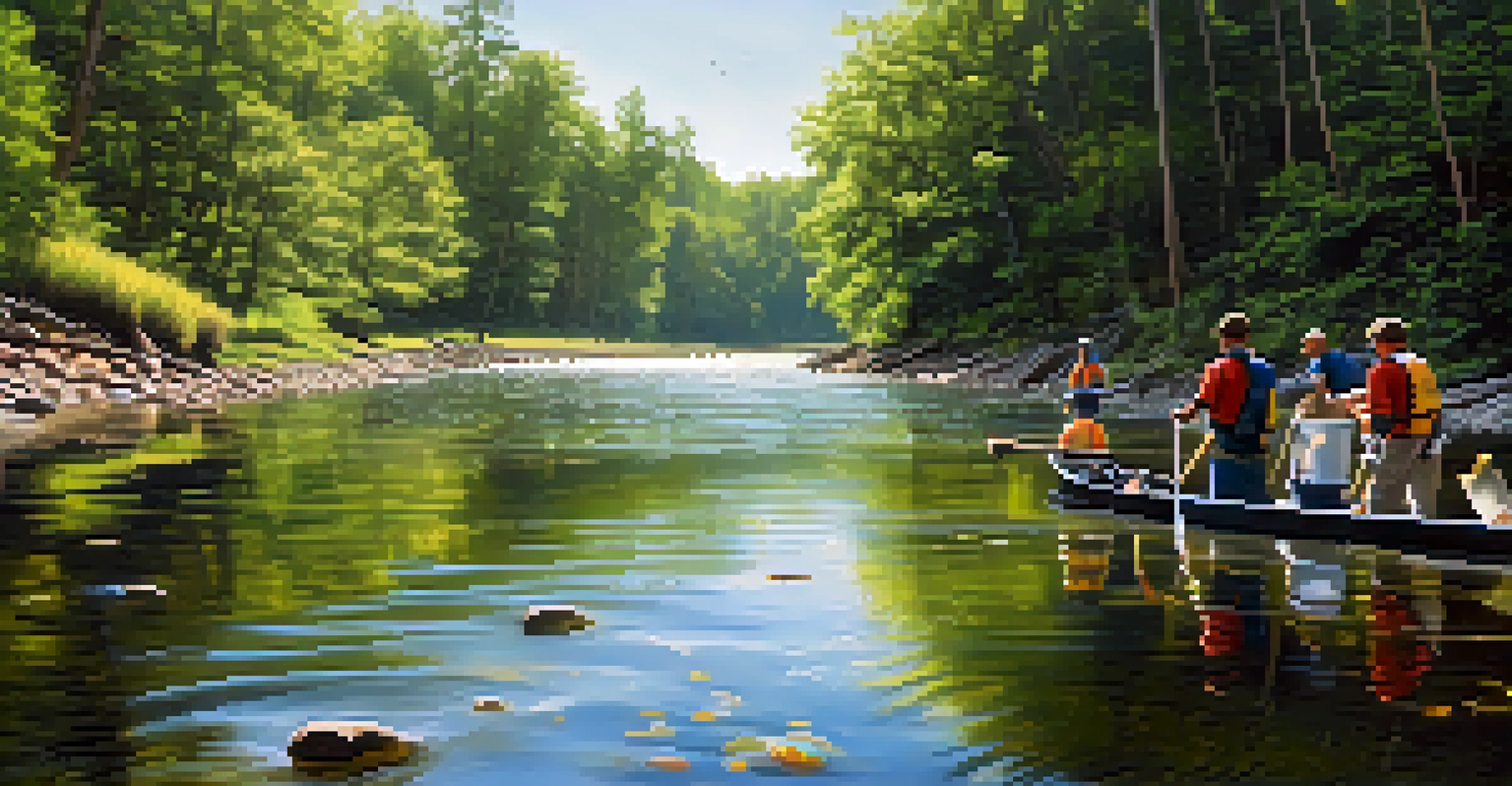The Role of Non-Profit Organizations in Georgia's Conservation

Understanding the Role of Non-Profits in Conservation
Non-profit organizations play a pivotal role in conservation efforts across Georgia. They are dedicated to protecting the state's diverse ecosystems, from the Appalachian Mountains to the coastal marshes. By focusing on conservation, these groups work to ensure that natural habitats are preserved for future generations.
The environment is where we all meet; where we all have a mutual interest; it is the one thing all of us share.
These organizations often operate independently of government agencies, allowing them to be more flexible and innovative in their approaches. This independence enables them to mobilize resources quickly, whether it's funding, volunteers, or local support, to tackle pressing environmental issues. For instance, they may initiate projects to restore native plant species or clean up polluted waterways.
Additionally, non-profits often serve as advocates for environmental policies, raising awareness about the importance of conservation. Through community engagement and education, they promote sustainable practices that resonate with the public, showcasing how individuals can contribute to the broader conservation narrative.
Key Non-Profit Organizations in Georgia
Georgia is home to a variety of non-profit organizations focused on conservation. Groups like The Georgia Conservancy and The Nature Conservancy have been instrumental in advocating for policies that protect the state's natural resources. These organizations not only promote conservation but also engage in land acquisition to safeguard critical habitats.

Another notable organization is the Georgia Wildlife Federation, which aims to conserve Georgia's wildlife and natural resources through education, advocacy, and habitat restoration. Their community-based initiatives allow individuals to participate in conservation efforts, fostering a sense of responsibility towards the environment.
Non-Profits Drive Conservation Efforts
Non-profit organizations are essential in protecting Georgia's diverse ecosystems through innovative projects and advocacy.
Moreover, many local non-profits focus on specific regions or species, such as the Georgia River Network, which works to protect the state's rivers and waterways. By addressing unique ecological challenges, these organizations contribute to the overall health of Georgia's environment.
Collaborative Efforts with Local Communities
Non-profit organizations in Georgia often collaborate with local communities to promote conservation. These partnerships leverage local knowledge and resources, ensuring that conservation efforts are relevant and effective. For example, community members can provide insights into local wildlife habits, which can guide restoration projects.
We won't have a society if we destroy the environment.
Educational programs offered by non-profits help raise awareness about the importance of conservation among residents. By involving the community in hands-on activities, such as tree planting or clean-up events, these organizations foster a shared sense of ownership over local natural resources.
Such collaboration not only enhances conservation efforts but also strengthens community bonds. When individuals come together for a common cause, they build relationships and a collective identity that can lead to sustained environmental stewardship.
Funding and Resource Mobilization Challenges
One of the significant challenges faced by non-profit organizations in Georgia is securing funding. Many rely on donations, grants, and fundraising events to support their initiatives. With competition for limited resources, it can be difficult for these organizations to consistently sustain their programs.
Moreover, the unpredictability of funding sources can hinder long-term planning. Non-profits need to be agile, often shifting their focus based on available resources. This can lead to challenges in maintaining ongoing projects or expanding their reach to new areas.
Community Engagement is Key
Collaborating with local communities enhances conservation efforts and fosters a sense of collective responsibility for the environment.
Despite these hurdles, many non-profits have developed innovative strategies to diversify their funding streams. By cultivating relationships with local businesses, exploring corporate sponsorships, and increasing their online presence, they can create a more stable financial foundation for their conservation efforts.
Legislative Advocacy and Policy Influence
Non-profit organizations are crucial advocates for environmental legislation in Georgia. They work to influence policies that affect conservation efforts, often mobilizing public support to drive change. By educating citizens about environmental issues, they create a constituency that demands action from lawmakers.
Through lobbying efforts, these organizations strive to ensure that conservation priorities are included in governmental agendas. Their engagement with policymakers can lead to the creation of protected areas or the implementation of sustainable practices in various sectors.
Furthermore, non-profits often collaborate with other stakeholders to amplify their advocacy efforts. By forming coalitions with businesses, academic institutions, and government entities, they create a unified voice that can effectively push for meaningful policy changes.
The Impact of Education and Outreach Programs
Education and outreach are pivotal components of non-profit conservation initiatives in Georgia. Many organizations provide programs aimed at teaching the public about local ecosystems and the importance of biodiversity. By fostering a deeper understanding of environmental issues, they inspire individuals to take action.
For instance, workshops and field trips can engage people of all ages, making conservation accessible and relatable. When individuals learn about the unique flora and fauna of Georgia, they are more likely to appreciate and advocate for its preservation.
Funding Challenges Persist
Securing consistent funding remains a significant challenge for non-profits, prompting them to diversify their financial strategies.
Additionally, outreach programs often target schools, instilling a sense of environmental responsibility in younger generations. By teaching children about conservation early on, these organizations help cultivate a culture of stewardship that can last a lifetime.
Success Stories: Non-Profits Making a Difference
There are numerous success stories highlighting the impact of non-profit organizations in Georgia's conservation landscape. For example, the Chattahoochee Riverkeeper has made significant strides in improving water quality along the Chattahoochee River. Their efforts have led to cleaner waterways, benefiting both wildlife and the communities that rely on the river for recreation and drinking water.
Another inspiring example is the Coastal Conservation Association Georgia, which focuses on protecting marine resources. Their initiatives have helped restore fish populations and promote sustainable fishing practices, ensuring that Georgia's coastal ecosystems remain vibrant.

These success stories not only showcase the effectiveness of non-profit efforts but also inspire others to get involved. By highlighting tangible results, these organizations demonstrate that collective action can lead to meaningful change in conservation.